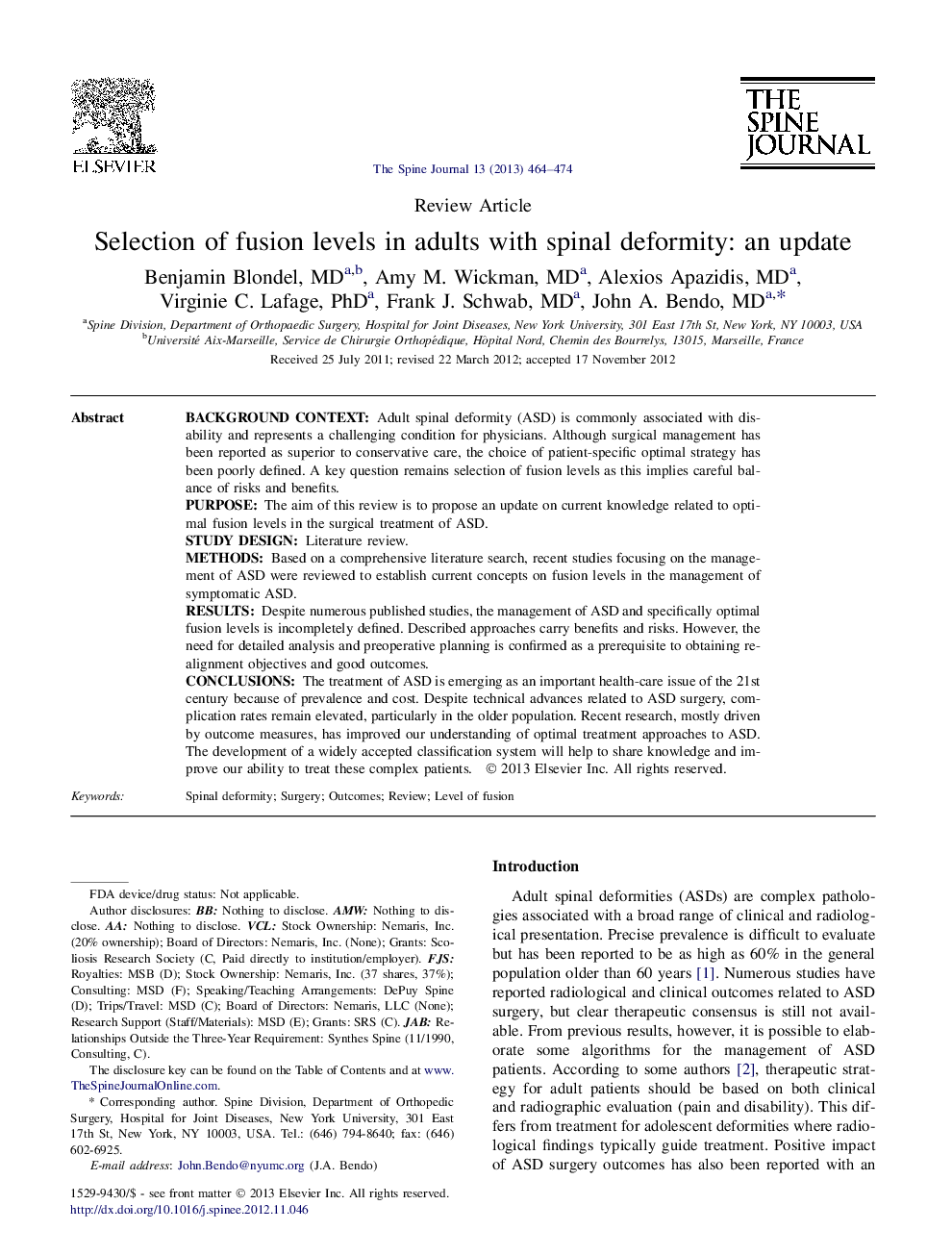| کد مقاله | کد نشریه | سال انتشار | مقاله انگلیسی | نسخه تمام متن |
|---|---|---|---|---|
| 6212679 | 1268587 | 2013 | 11 صفحه PDF | دانلود رایگان |
Background contextAdult spinal deformity (ASD) is commonly associated with disability and represents a challenging condition for physicians. Although surgical management has been reported as superior to conservative care, the choice of patient-specific optimal strategy has been poorly defined. A key question remains selection of fusion levels as this implies careful balance of risks and benefits.PurposeThe aim of this review is to propose an update on current knowledge related to optimal fusion levels in the surgical treatment of ASD.Study designLiterature review.MethodsBased on a comprehensive literature search, recent studies focusing on the management of ASD were reviewed to establish current concepts on fusion levels in the management of symptomatic ASD.ResultsDespite numerous published studies, the management of ASD and specifically optimal fusion levels is incompletely defined. Described approaches carry benefits and risks. However, the need for detailed analysis and preoperative planning is confirmed as a prerequisite to obtaining realignment objectives and good outcomes.ConclusionsThe treatment of ASD is emerging as an important health-care issue of the 21st century because of prevalence and cost. Despite technical advances related to ASD surgery, complication rates remain elevated, particularly in the older population. Recent research, mostly driven by outcome measures, has improved our understanding of optimal treatment approaches to ASD. The development of a widely accepted classification system will help to share knowledge and improve our ability to treat these complex patients.
Journal: The Spine Journal - Volume 13, Issue 4, April 2013, Pages 464-474
